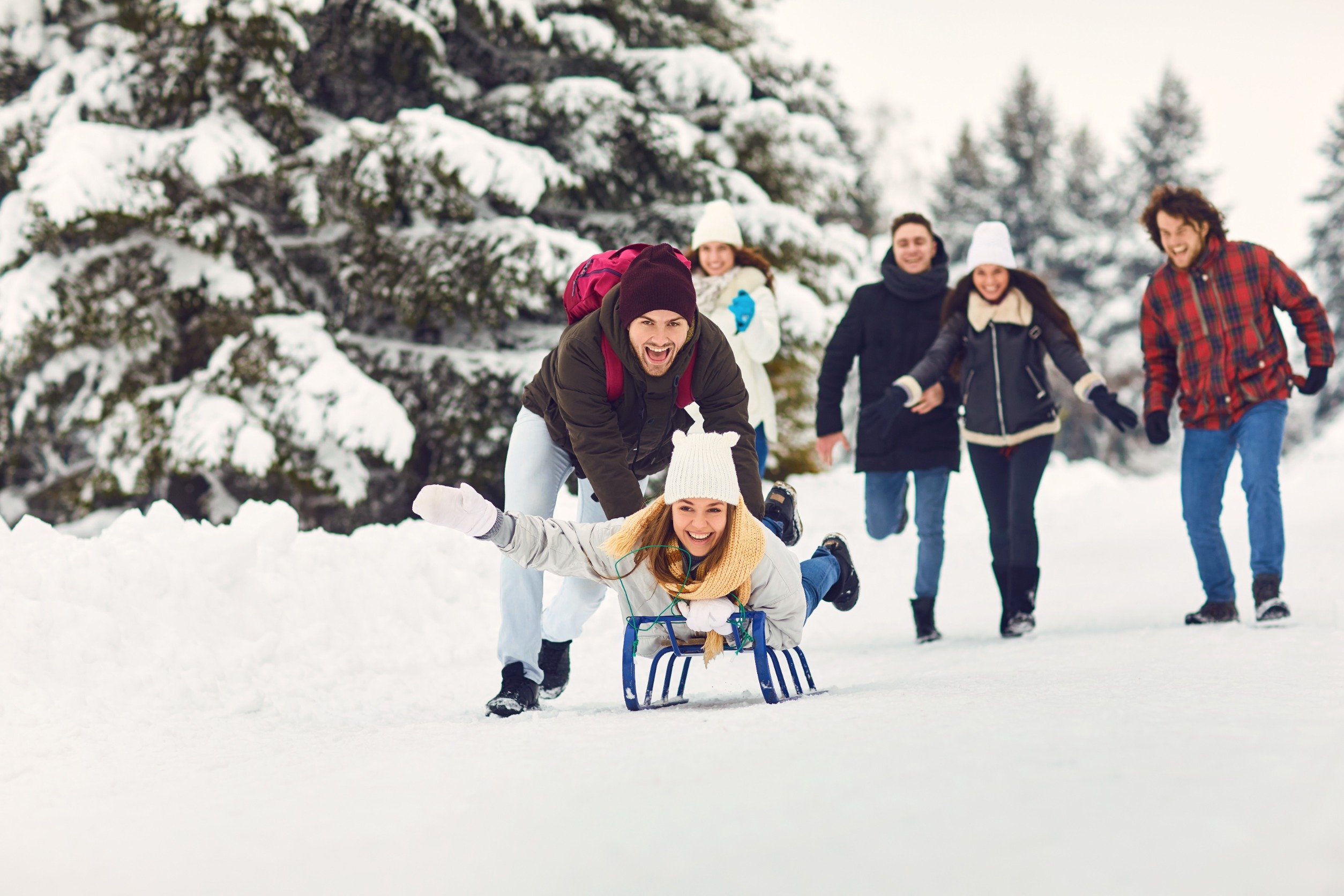Common Winter Activity Injuries and How to Avoid Them

Winter brings sparkling snow, cozy nights, and the holiday season. This time of year also has many outdoor activities like sledding, skiing, ice skating, and more. With these activities also comes the risk of injuries and sometimes even death. In this blog, the personal injury attorneys at Patterson Legal Group explain some common winter activity injuries and winter sports injuries as well as offer some tips on how to avoid them.
The Most Dangerous Winter Activities and Winter Sports
These activities can turn into a medical emergency if you’re not prepared. From slip and fall accidents to broken bones, here are some of the most dangerous winter activities and sports.
Skiing and Snowboarding
These high-speed downhill sports involve inherent risks like collisions, falls, and impacts with obstacles. Even the most experienced skiers and snowboarders are not immune to winter sports injuries. A 2022 study found that professional skiers and snowboarders “have a substantial risk of sustaining injuries”.
Ice Skating
While it may look graceful, ice skating can be treacherous for both beginners and experienced skaters alike. Falls on the hard ice can result in head injuries, fractures, and cuts.
Sledding
Sledding is one of the most beloved winter activities. This classic winter pastime is fun for all ages, but collisions with other sledders, uncontrolled descents, and hitting bumps can all lead to injuries.
Snowmobiling
Riding a snowmobile can be a thrilling experience, but they can also be dangerous if not operated properly. It is easy for riders to control on uneven terrain and when driving too fast. Snowmobiling accidents can lead to serious injuries, including hypothermia, frostbite, and even death.
Shoveling Snow
Shoveling snow is not a beloved winter sport, but it is a common way to sustain winter activity injuries. This seemingly harmless chore can be strenuous and lead to injuries like back pain, muscle strains, slip and falls, and even heart attacks.
Avoiding Winter Activity Injuries
It’s important to always be aware of the risks involved in any activity. The combination of cold temperatures, the outdoors, and potentially dangerous equipment can make winter activities particularly dangerous. Here’s how you can avoid winter activity injuries when participating in the winter activities and sports mentioned above.
Skiing and Snowboarding
- Prior to skiing or snowboarding, work on core strengthening exercises to improve stability and control.
- Make sure your skis or snowboard are the right size and style for your height and weight.
- Ski or snowboard within your comfort zone.
- Wear goggles or sunglasses to protect your eyes from the sun’s glare on the snow.
- If you’re new to skiing or snowboarding, invest in professional lessons to learn proper technique. Also, if you haven’t hit the slopes for a while, it’s a good idea to take a refresher course.
Ice Skating
- Wear appropriate clothing in layers so you can adjust to the temperature.
- Invest in proper protective gear like a helmet, elbow and knee pads, and wrist guards.
- Rent or buy skates that fit snugly around your ankles and provide good support. Avoid hockey or speed skates unless you’re experienced.
- Before stepping onto the rink, check the ice surface for any cracks.
Sledding
- Look for a clear area free of trees, rocks, fences, light poles, or other obstacles.
- Choose your sled wisely. Avoid plastic sheets or discs, which offer little control. Instead, choose steerable sleds like toboggans or saucers with brakes.
- Avoid sledding in icy conditions or heavy snowfall that could affect visibility.
- Layer up with warm, waterproof clothing and wear gloves and boots to protect against the cold.
Snowmobiling
- Take a snowmobile safety course to learn proper operation, handling, and safety regulations.
- Check weather forecasts and trail conditions before heading out.
- Choose trails appropriate for your skill level and avoid riding alone. Tell someone where you will be riding and when you expect to return.
- Ride at a moderate and safe speed.
- Carry a first-aid kit and emergency supplies.
Shoveling Snow
- If you have any heart conditions, it is best not to shovel snow. Snow shoveling is responsible for up to 100 deaths a year. The combination of the strenuous motions and the cold temperatures makes this winter activity particularly dangerous for certain people.
- If you start to feel pain, stop shoveling and take a break.
- Use a lightweight shovel that is comfortable for your height and strength. Avoid using a shovel that is too heavy or too long for you.
- Push the snow instead of lifting to prevent hurting your back.
- Clear your sidewalks and driveway before the sun melts the snow to make it easier to shovel and prevent slick ice from forming.
Injured in a Winter Accident? Contact Patterson Legal Group
Whether you like to hit the slopes or prefer to stay toasty by a fire, the team at Patterson Legal Group hopes everyone enjoys their preferred winter activities safely. Even if you do follow guidelines, winter activity injuries can always happen when someone is acting negligently or recklessly. If you or a loved one have suffered from a winter injury, we can help.
Patterson Legal Group has more than 75 years of combined experience successfully representing injury victims in Kansas, Missouri, and Oklahoma. We have a track record of winning superior settlements for our clients. Our firm offers free consultations and works on a “no win, no fee” basis, which means that you do not pay a dime unless money has been recovered on your behalf.
To get started on your free consultation, call us 24/7 at (888) 687-2400. You can also fill out this contact form or reach out via LiveChat.





